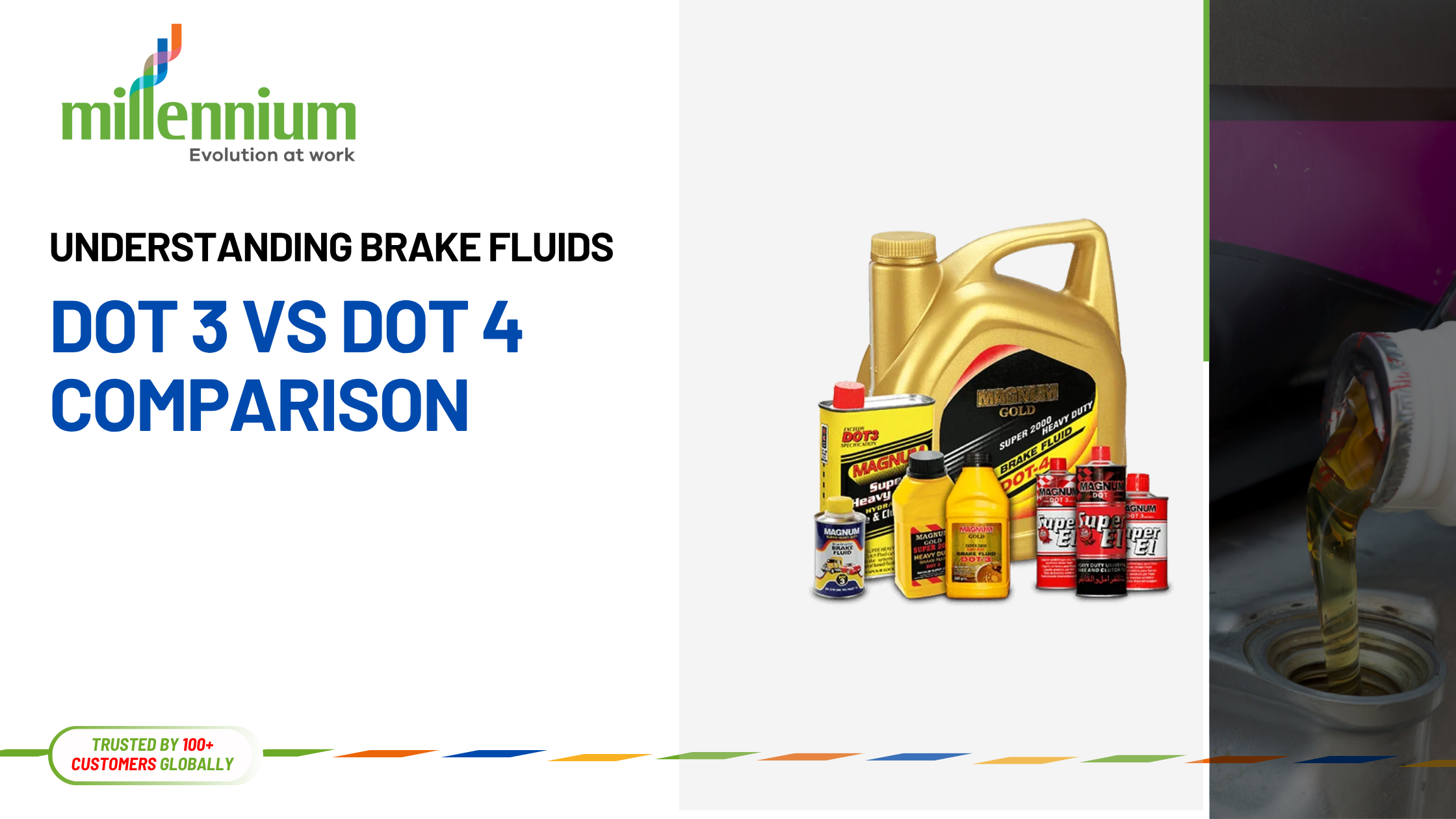Let’s be honest, brake fluid isn’t exactly the most looked-after part of your car. But it is one of the most important. Every time you press that brake pedal, brake fluid is the stuff making sure your car actually stops.
So, if you’ve ever wondered what the difference is between DOT 3 and DOT 4 brake fluid or if you even need to care, you’re in the right place. We’re breaking down the key differences, what they mean for your vehicle, and when to use which.
Oh, and yes, we’re also giving Magnum Brake Fluids their moment in the spotlight because quality matters when you’re dealing with your brakes.
Brake Fluid: What It Actually Does
In simple terms? Brake fluid is like the messenger between your foot and the brakes. You press down, it transfers that force through the lines, and boom, your car slows down. It’s also there to keep things lubricated and rust-free inside your braking system.
Most brake fluids are glycol-based, and they come in types like DOT 3, DOT 4, and DOT 5. “DOT” just stands for the Department of Transportation, which sets the standards.
One thing you really need to watch for? Boiling point. Brake fluid gets hot, especially during hard stops or going downhill. If it boils? Your brakes might fail.
DOT 3 vs DOT 4: Head-to-Head
Feature | DOT 3 | DOT 4 |
Base Formula | Glycol-ether | Glycol-ether + borate esters |
Dry Boiling Point | ~205°C / 401°F | ~230°C / 446°F |
Wet Boiling Point | ~140°C / 284°F | ~155°C / 311°F |
Water Absorption | Slower | Faster |
Best For | Older cars, no ABS | Modern cars, ABS/ESP |
Maintenance | Less often | More often |
Cost | Lower | Slightly higher |
Key Differences
- Boiling Point:
DOT 4 holds up better under heat. If you’re doing a lot of hill driving, live in a hot climate, or drive hard? DOT 4 is your friend. - Water Absorption:
Both types absorb moisture over time (they’re hygroscopic), but DOT 4 does it faster, so it needs changing more often. - Compatibility:
They’re chemically compatible (both glycol-based), but it’s best not to mix. Putting DOT 3 into a DOT 4 system? Not ideal. You’ll be lowering its performance. - Use Case:
DOT 3 = fine for older rides or casual city cruising.
DOT 4 = the go-to for modern cars, especially with ABS or stability control. - Price & Maintenance:
DOT 3 is cheaper and more stable long-term. DOT 4 costs a bit more, but gives better performance if your car needs it.
So, When Do You Use DOT 3 or DOT 4?
DOT 3:
- Great for older cars and bikes
- No ABS? No problem.
- Low-cost and low-maintenance
DOT 4:
- Needed in most modern vehicles
- Perfect for ABS, ESP, or heavy braking
- Performs better under stress (heat, hills, towing, etc.)
Always check your owner’s manual. Using the wrong type can damage parts, reduce brake performance, or even void your warranty.
Magnum Brake Fluids: Real Performance
If you’re serious about keeping your braking system reliable, Magnum DOT 4 Brake Fluid is worth a look. Here’s why mechanics trust it:
- High boiling points, even under pressure
- Safe for ABS and stability systems
- Helps reduce wear & corrosion
- Keeps pedal feel consistent—no mushiness
- Available in sizes for both DIYers and pro shops
Basically? It’s quality you can count on.
Frequently Asked Questions About Brake Fluids: Understanding the DOT 3 vs. DOT 4 Comparison
What does DOT stand for again?
Can I mix DOT 3 and DOT 4?
Which one’s hotter?
How often should I swap it out?
Wrap-Up
At the end of the day, the best brake fluid is the one that matches your car’s needs.
- Got an older vehicle? DOT 3 will probably do the trick.
- Driving something newer with advanced braking? Go with DOT 4.
Either way, don’t cheap out. Good brake fluid like Magnum DOT 4 is your first line of defence against fade, failure, and expensive repairs.



